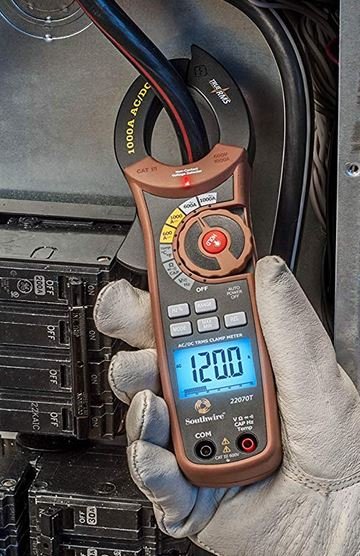menzies
Guru
I have a house bank of 12 glass mat batteries. I have two 8D start batteries. All are less than two years old.
I have a Blue Seas ACR. This senses a charge going to any battery from any source and automatically combines the banks for charging. Once that charging source stops (ACR recognizes as drop in battery charge) it stops combining.
I started noticing last season that my start batteries, (as seen at the helm voltage meters) would start off really healthy but on a long day's run (say 8-10 hours) it starts to drop below the 24 volts and into the red. It is happening again now on this Bahamas trip, with some long days again.
To ensure all systems are supported I crank the genset until the end of my run
So I decided to sit staring at the ACR and work through what could be happening here. I have ended up with this theory that I would like you bounce off you and then a question.
I run the genset in the evening and charge everything up. The ACR relays since it senses a charge source. Next morning I start the engines and off we go. Now there is a charging source from the alternators. So the ACR relays again. And not only keeps the starts charged but also the large house bank - which the 4K inverter is using to run a house which currently included a large domestic fridge freezer AND a chest freezer. I don't know the ampage of my alternators but my theory is that they can't manage that load and do the engine starts are getting drawn down.
Thoughts on that? Anything else.
The question: I am thinking of turning off this relay and starting the genset. Then seeing if both banks are being charged without the ACR, i.e directly by the genset. Then leaving it off allowing the altenators to manage only the start batteries. And using the genset daily as I already do to charge the house. Thoughts on this?
I have a Blue Seas ACR. This senses a charge going to any battery from any source and automatically combines the banks for charging. Once that charging source stops (ACR recognizes as drop in battery charge) it stops combining.
I started noticing last season that my start batteries, (as seen at the helm voltage meters) would start off really healthy but on a long day's run (say 8-10 hours) it starts to drop below the 24 volts and into the red. It is happening again now on this Bahamas trip, with some long days again.
To ensure all systems are supported I crank the genset until the end of my run
So I decided to sit staring at the ACR and work through what could be happening here. I have ended up with this theory that I would like you bounce off you and then a question.
I run the genset in the evening and charge everything up. The ACR relays since it senses a charge source. Next morning I start the engines and off we go. Now there is a charging source from the alternators. So the ACR relays again. And not only keeps the starts charged but also the large house bank - which the 4K inverter is using to run a house which currently included a large domestic fridge freezer AND a chest freezer. I don't know the ampage of my alternators but my theory is that they can't manage that load and do the engine starts are getting drawn down.
Thoughts on that? Anything else.
The question: I am thinking of turning off this relay and starting the genset. Then seeing if both banks are being charged without the ACR, i.e directly by the genset. Then leaving it off allowing the altenators to manage only the start batteries. And using the genset daily as I already do to charge the house. Thoughts on this?
Last edited:

